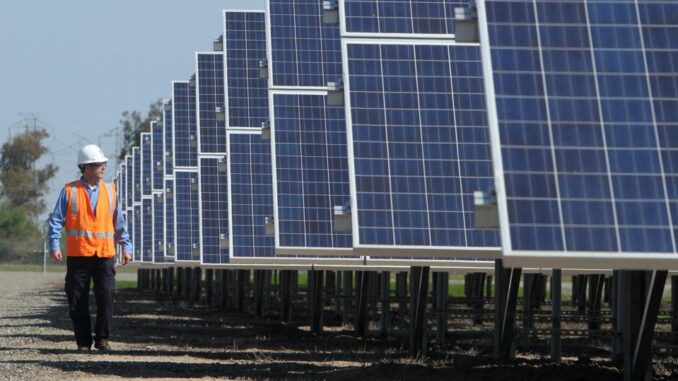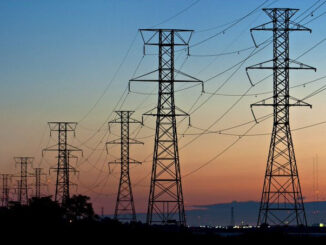
Energy News Beat Publishers Note: We believe that all people in the world should have access to clean, reliable, and the lowest-cost energy at market capabilities. The only way to achieve this goal to get over 1.8 billion people out of poverty is to have a “Balanced Diet of Power”. The balanced diet could include fossil, renewables, and nuclear in all types. Being good stewards of the earth also means producing the energy with the least impact on the environment. The bottom line: Fiscally producing the “Balanced Diet of Power” at the lowest impact to our environment.
In the early 2000s, utilities were unable to grasp the climate change movement. Today, though, they are been swept up by it — a function of stricter environmental regulations, cheaper natural gas, and affordable renewables. But if electrification and decarbonization is realized, it could pay big dividends for power companies.
Are utilities preparing? The newfound demand is driven by the potential for electric vehicles (EVs) and the growth of renewables. It’s also guided by the development of energy efficiency standards and the creation of demand response programs. The shift means more sales and greater revenues. But it also necessitates new investment. Indeed, about 70% of the largest U.S. electric and gas utilities now have net-zero goals, says S&P Global Market Intelligence.
“As we become more electrified, diversity is essential” for reliability and environmental stewardship, says Lynn Good, chief executive of Duke DUK Energy at CERAWeek 2021 by IHS Markit INFO . “There is no single technology that is the solution.”
Good, whose comments came last Thursday, said that Duke Energy plans to be net-zero by 2050. Nuclear energy is providing a sizable share of the utility’s carbon-free power, and so is solar. Duke has a storage facility that “pairs nicely” with its solar farms. And she expects natural gas to keep playing a key part. She adds that the company is gradually electrifying its transportation fleet while she expects customers to do the same. As such, the utility is examining what circuits are seeing the most penetration while it is also implementing “time-of-use” rates to ensure that the electricity load is properly managed.
The electric utility and transportation sectors make up at least half of all U.S. carbon emissions. The buildings sector and agricultural farms are also major contributors. But Duke’s experience encapsulates the overall issue: as we move to electrification, it will require an increasing amount of money to modernize grids so that they can carry more green electrons. The investment is needed to redirect where electrons are pointed to avoid congestion.
The Boston Consulting Group analyzed a “model utility” with 2 to 3 million customers. It found that it would need to invest between $1,700 and $5,800 in grid upgrades per EV through 2030. That’s a ton of dough given that it expects 50%-60% of all new car sales to be EVs in 2030. Already, General Motors and Volvo have said they will make only EVs next decade.
Not Just Blowing Wind
ASSOCIATED PRESS
Consider Xcel Energy XEL , which announced plans to serve 1.5 million EVs by 2030: Ben Fowke chair of Xcel Energy, told the CERA conference that EVs are now priced where many consumers can afford them. They can fuel them for far less compared to traditional cars and with 80% fewer emissions. Xcel will be installing home chargers at no cost to customers. The system will encourage juicing up during non-peak hours so that it “won’t stress the distribution grid.”
Xcel has a goal of being carbon neutral by 2050. Wind power is not just its largest contributor, it is also the company’s least expensive option. Fowke says that he expects 60% of the utility’s electric generation to be fueled by renewables in 2030 — “with some natural gas to back that up.” It is preserving its nuclear fleet. “We need to develop zero-carbon technologies to get 100% by 2050.”
Edison International EIX is another utility aiming high — part of California’s regulatory effort to limit CO2 releases. The state has a goal of reducing CO2 emissions from 1990 levels by 40% by 2030 and to be net-zero by 2045. It also wants to phase out the sale of gas-powered cars and trucks by 2035.
Of note, Edison’s Southern California Edison has the Tehachapi Energy Storage Project that is located on a wind farm about 100 miles north of Los Angeles. It is projected to generate 8 megawatts for four hours, which equates to 32 megawatt/hours. It also uses lithium-ion batteries, which can store and discharge electricity at any time, although they have a limited duration.
“The most affordable way to get to net-zero by 2045 is through renewables … and minimal use of fossil fuels,” says Pedro Pizarro, chief executive of Edison International, at the CERA event. “We see about 6% of electrons in 2045 still coming from gas … Across California, adding that 80 gigawatts of renewables and 30 gigawatts of bulk power storage .. would require something like $175 billion … between now and 2045, plus another $70 billion or so of investment on the grid side to make sure the grid can manage all that.”
Greater investment means adding sensors to monitor equipment and to prevent grid overload. While the load has been flat, he projects electricity use to rise by 60% in Edison’s service territory — a function of electrification and a lot more EVs. But Pizarro also says that energy bills will be 30% lower than they are today.
Among the other utilities trying to get ahead of the low-carbon movement are Alliant LNT , Ameren AEE , American Electric Power AEP , CenterPoint Energy CNP , Dominion Energy, Exelon Corp. EXC , PG&E Corp., PPL Corp. PPL , Sempra Energy SRE , and Southern Company SCCO .
While achieving carbon neutrality is paramount, so too is reliability — something that will require natural gas and nuclear power. More, though, needs to be done to bring emerging technologies to market. But the signs point one way: the price of wind, solar and storage technologies is dropping. And when coupled with smart leadership and well-designed regulations, net-zero by 2050 is a real possibility.



